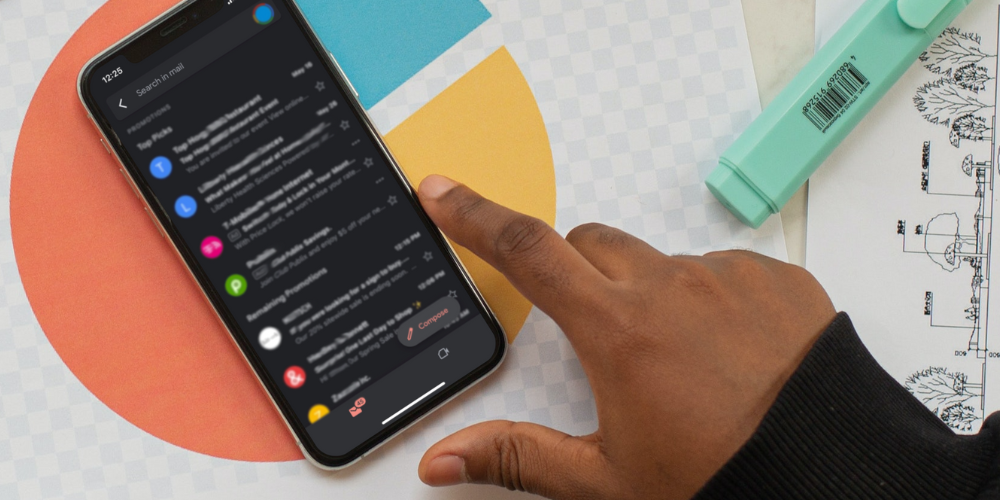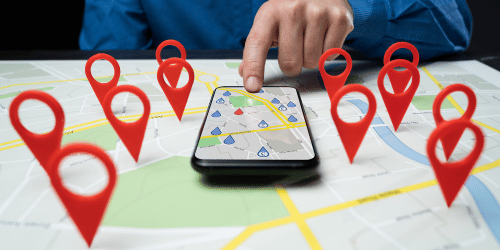
Prior to the COVID-19 pandemic, the idea of a gala brought very specific images to peoples’ minds: long dresses, white gloves, golden plates, and an auction with jewelry or artwork. No one would ever dream to attend one of these formal occasions in pajama bottoms. But in the midst of the pandemic, that’s just what people did!
The switch to the virtual world in 2020 brought about a new approach to nonprofit event planning. Many of the changes made it easier for supporters to attend, while still maintaining the key components of a classic gala. You could still network with other attendees and participate in auction activities while the organization raised money and spread awareness of its mission.
Now, we’re a couple more years from the transition to fully virtual activities, and we’ve further perfected the virtual event and more specifically, the virtual gala.
In this guide, we’ll discuss best practices your nonprofit can use to wow your audience, even without fancy dresses and golden plates. By incorporating top tips for your silent auction, live streamed activities, and networking opportunities, your next gala will be a smash hit among your supporters!
1. Promote your event online
So, you’ve decided to host a virtual gala, congratulations! It’s a big decision that requires a lot of planning, but we believe in you! One of the big questions you’ll need to determine is how to get people to attend your event. You could set up flyers at your local coffee shop or send invites in the mail, but one of the most important places to promote your event will be online.
Your event takes place on the internet, so that’s probably where your prospective attendees will be anyway! Meet them where they are by promoting your event through appropriate online channels.
Combine traditional outreach strategies with new marketing tactics to get in touch with more people than ever before. You might decide to send a letter in the mail, but you should also leverage:
- Email. Send emails with teasers about your event to your current supporters and prospective attendees. Send sneak peeks into your auction product catalog and hype up your keynote speaker for the event to build excitement.
- Ads. Use retargeted ads to recapture your supporters who land on your website but don’t end up signing up for your event. These ads show up in the margins while they’re reading the news or looking up a recipe, gently leading them back to your registration page.
- Social media. You should post regularly on social media, but don’t forget to use other tools like ads, Facebook groups, challenges, and even fundraisers to get the word out about your upcoming gala.
- Word of mouth. Word-of-mouth marketing used to simply describe conversations people had in the community, but now it means so much more! Ask your keynote speaker and other nonprofit influencers to post about your event and promote it to their followers. This type of campaign helps you get more from your event partners while reaching new audiences.
Using any and all of these channels, your nonprofit should send the right message to the right people — after all, aren’t you much more intrigued by emails that actually cater to your interests? Leveraging segmentation and donor data, you can highlight the aspects of your gala that will be most engaging for your audience members.
2. Procure interesting auction items to excite your audience
Before you get knee-deep into auction item procurement, consider your gala’s target audience. Only when you know who will attend your gala can you find the items that will really tickle their fancy.
Handbid’s list of top silent auction items provides some ideas to spark your imagination, including:
- Game tickets and signed memorabilia for the sports fans in your audience.
- Concert or comedy show tickets for a local venue — just keep in mind if your audience is more likely to jump with excitement at a jazz concert or a rap show.
- Gift baskets of all sorts. Your grillmaster basket may appeal to your Big Green Egg owners while weekend gamers will become starry-eyed over your game night basket.
Reach out to local businesses and sponsors and ask if they’d be willing to give items like these as in-kind contributions. After all, the worst they can say is “no.”
When you reach out to these prospects, mention that contributing items to the auction can be a great marketing strategy for the company. If they submit items for a gift basket, their brand name will be plastered all over the prize! Plus, you can give shout-outs to your generous sponsors who provided these items at the gala.
If they choose not to donate items, you can also ask for financial sponsorships to help increase the ROI for the event. Tell these prospective sponsors about the amazing mission you’re working toward and how the money from this event will support your cause to pull at their heartstrings. As an added bonus, tell them about the other ways your organization will thank sponsors with co-branded marketing materials and other benefits. If a good cause and great opportunity doesn’t intrigue them, you may not want their sponsorship anyway!
3. Move your auction to an online platform
Imagine you’re at a gala and you’ve just fought your way through the crowd to see the items available. You’re surrounded by other people all craning their necks over your shoulder to see exactly what you’ve got your eye on. You make your bid and escape the crowd to go sit back down. When the auction is close to ending, you try to fight your way to the front to be sure you’ll be the winning bid on that item your heart is set on. But you can’t fight the crowd fast enough! The auction ends and you lose your prize.
This example shows how chaotic traditional silent auctions can become given the long lines that form around auction item tables, indistinguishable handwriting, and long checkout lines. When you move your auction online to match the format of your virtual gala, you can clean up these messes and make the process much more enjoyable for everyone involved!
Carefully consider the auction software features that will best suit your needs and the needs of your supporters. For example, you might look for features such as:
- A user-friendly interface that allows attendees to easily scroll through your auction items, determine their favorite items, and make bids.
- Outbid notifications that alert supporters when someone else has outbid them for their favorite auction item.
- An easy and secure checkout system that makes it easy for auction winners to pay for the items they won.
Moving your gala online gives you an opportunity to modernize your event auction. You can actually improve your supporters’ experiences when you find the right software solution that prioritizes ease of use. Supporters can join your auction from anywhere and everywhere, and an intuitive system can make a huge difference in supporter engagement.
4. Set a full and engaging gala agenda
A major concern for many organizations toying with the world of virtual events is how they can keep virtual attendees engaged in the event activities. How can you keep people immersed in your event so they don’t click out and start browsing their Facebook walls instead?
The key is providing a full and engaging agenda for your virtual gala. Generate excitement about the event opportunities by giving your supporters a copy of the agenda. You can dazzle them with gala activities like:
- Keynote speakers with an inspiring message about your organization.
- Roundtable discussions via virtual breakout rooms with other attendees.
- Auction updates and popular item highlights.
As you comb through your potential content for the auction, consider what should be live and what might be better suited for a recording. For example, imagine a glitch in your software in the middle of the keynote speaker’s address. Your attendees would miss so much important information! Instead, prerecord the message and use your livestream solution to answer any questions after it’s done.
To keep supporter involvement activities as interesting and exciting as possible, use gamification strategies. For example, show who has bid the most on the auction leaderboard and use a countdown clock to create urgency for people to submit their bids!
5. Don’t forget about setup and breakdown
Because your event is virtual, you don’t need to worry about setting up tables and decorating with the perfect tablecloths and centerpieces. But that doesn’t mean there’s nothing required of your team to set up the event!
You’ll need to conduct test runs of the recorded elements of your event to make sure they’ll work properly during the event itself. Test out your bidding and donation software (by bidding a dollar to yourself!) just to make sure everything will work swimmingly for attendees. Then, create an agenda sheet for your attendees so they know when each of your activities is taking place. You wouldn’t want them to miss their favorite speaker or activity.
The breakdown of your event also involves minimal physical labor at a virtual gala. However, it does require your organization to take a few specific actions to close out event activities:
- Make sure the end of the event isn’t a surprise. Using a countdown clock for the end of your auction and incorporating closing remarks into your agenda will help your event come to a natural conclusion rather than an abrupt halt.
- Organize how auction winners will get their prizes. Tell them where they can pick the prize up if necessary. More convenient still, send it straight to them! Delivery is so fast and easy nowadays, this is often the best option.
- Thank everyone for attending and for their support. Saying thank you is, of course, polite. But it’s also necessary to retain your dedicated supporters over time. Send thank-you notes, phone calls, emails, and even gifts to attendees, sponsors, volunteers, and everyone else who made your virtual gala possible.
After you’ve sent all of your thank-you cards, you might be ready to collapse on the couch with exhaustion. But your job still isn’t done. Although this event just ended, you should still be preparing for future opportunities by considering the data from this gala.
Review the data you gathered from the event. NPOInfo’s data analytics article notes that some common metrics to review include your donation volume, average gift size, demographics, and return on investment from the event. Compare these numbers with the ones you predicted before the event. Then, consider which ones you could improve next year and how you plan to do so.
Wrapping up
Virtual galas allow supporters to attend your gala from the comfort of their own homes (and even from the comfort of their own PJs!). Just because the event takes place on a screen doesn’t mean it’s necessarily easier, though. Your team will still need to prepare extensively to engage your audience and make sure your event is a smash.
If you’re still unsure about a fully virtual event after reading this, no worries! You can always look into hybrid opportunities. You’ll still need to incorporate the best practices covered in this guide, but you’ll also include an in-person element. If you decide to take this route, we still recommend using your virtual auction software to avoid line build-up at auction tables in person. Consider the examples of others who have done this well in the past and review the options before making your final decision.
This is a guest post from Jeff Porter at Handbid.
Jeff Porter, Founder & CEO of Handbid, has spent 18 years in the nonprofit industry. In 2004 he founded the Prader-Willi Syndrome Association of Colorado where he still resides as board chair. Jeff learned early on that nonprofits desperately needed better and more affordable fundraising solutions. Leveraging his software background, he built most of the tools his charities used, and in 2011 he launched Handbid at his own fundraising event.
You May Also Like
These Related Stories

Earning 'found' money: The digital sponsorship starter kit

Nonprofit email subject lines: 3 tips to capture more opens
